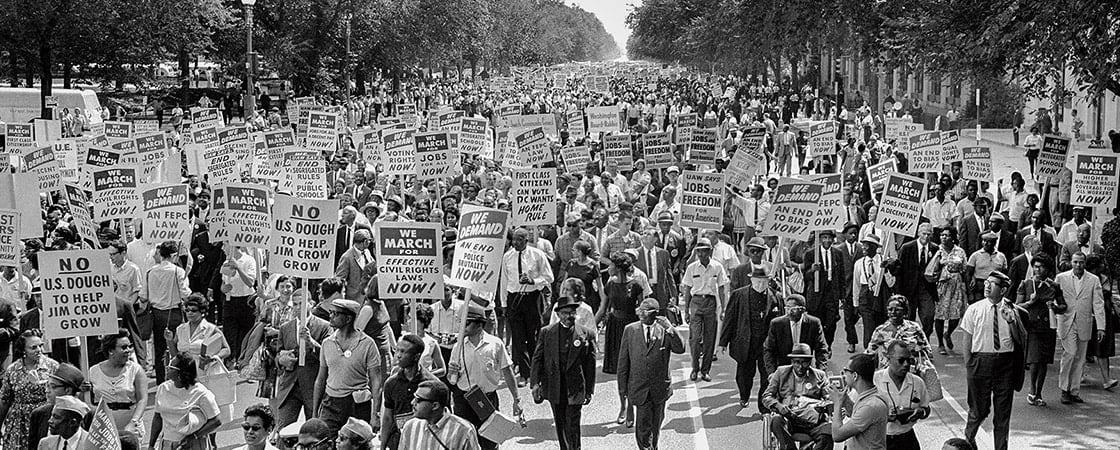Courtesy of Tom Ellison (Ellison, 1962)
Tom Ellison, around 1962
Twelve-year-old Tom Ellison stepped off the bus, his heart humming with excitement. Finally, he was here: Washington, D.C.!
It was August 28, 1963. For more than two days, Tom had been on a bus with other kids traveling north from his hometown of Birmingham, Alabama. Across the country, thousands of people had been making similar journeys—by bus, by train, by plane, by car, by foot. As Tom stepped out into the bright sunlight that morning, he gazed in awe at the endless throngs streaming into the area around the Washington Monument.
This enormous crowd was flooding the nation’s capital to demand equality for Black Americans. For nearly 200 years, U.S. lawmakers had put in place racist laws that robbed Black people of basic rights. Hateful discrimination and violence toward Black Americans were widespread, especially in the South.
Now people from every corner of the U.S. were coming together to declare with one voice that enough was enough. They were going to march together for about a mile, from the Washington Monument to the Lincoln Memorial. There, civil rights leaders would deliver speeches calling for change. This massive protest was known as the March on Washington.
As Tom prepared for the march, he sensed a current of hope running through the crowd. “I remember the joy on the faces of the people who felt that they were going to accomplish something that day,” he says.
Already, it was clear: This was an event that would change history.
Twelve-year-old Tom Ellison stepped off the bus. His heart was humming with excitement. He was finally in Washington, D.C. It was August 28, 1963.
For more than two days, Tom had been on a bus with other kids. He had been traveling north from his hometown of Birmingham, Alabama. Across the country, thousands of people made similar journeys. They went by bus, train, plane, car, and foot. Tom stepped out into the bright morning sunlight. He gazed at the throngs streaming around the Washington Monument. He was in awe.
The crowd was there to demand equality for Black Americans. For nearly 200 years, U.S. lawmakers had made racist laws. The laws robbed Black people of basic rights. Hateful discrimination and violence toward Black Americans were widespread, especially in the South.
Now people from all over the U.S. were coming together to say that enough was enough. They would march for about a mile, from the Washington Monument to the Lincoln Memorial. There, civil rights leaders would deliver speeches. This massive protest was known as the March on Washington.
The crowd seemed hopeful. “I remember the joy on the faces of the people who felt that they were going to accomplish something that day,” Tom says.
It was clear: This event would change history.



